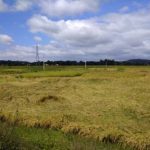New Delh: The much hyped Single Window Clearance System(SWCS) for approval to start business by the state governments in the country, in fact, is not know to may of the industrialists in the country. That is what a NITI Ayog survey report says.
“The survey data show low awareness among enterprises about single window systems, instituted by states”, points out the country’s apex policy making body’s survey report, which was launched on Monday.
The report says that on an average only about 20% of start-ups, which are of recent origin, report using single window facilities introduced by state governments for setting up a business. “Even among experts”, the report adds, ” only 41% have any knowledge of the existence of these facilities.
Describing it as Informational Gaps, the report suggests that the states need to enhance awareness of the steps being undertaken by them to the improve ease of doing business.
The NITI Aayog’s Ease of Doing Business report based on an enterprise survey of 3500 manufacturing firms across Indian states and union territries was released by the union minister of commerce, Nirmala Sitaraman, and minister of law & justice and electronics and IT, Ravishankar Prasad, released the survey report at a function, here on Monday. The survey has been conducted, along with the IDFC Institute, to assess the business regulations and enabling environment across India from firms’ perspective. The vice chairman of NITI Aayog, Arvind Panagariya, his successor Rajiv Kumar who is to assume office on 1st September, CEO NITI Aayog Amitabh Kant and the secretary, department of industrial policy promotion(IPP), Ramesh Abhishek, were present on this occasion.
The survey comes in the backdrop of the fact that India needs to create an environment that fosters globally competitive firms, capable of driving and sustaining economic growth.
Pointing out that a high level of economic activity and better performance on a range of doing business indicators are strongly correlated, the report says enterprises in high-growth states are significantly less likely to report major or very severe obstacles in (i) land/ construction related approvals, (ii) environmental approvals and (iii) water and sanitation availability relative to enterprises in low-growth states. Quite remarkably, firms located in high-growth states also report 25% less power shortages in a typical month, compared to firms in low-growth states, it adds.
Stating that there is an improvements in getting clearances to start business, the report said newer and younger firms, including startups established after 2014, report a more favorable business environment in that they take less time in obtaining approvals than older firms, suggesting an improvement in the business environment. Moreover, young firms report that most regulatory processes do not constitute a major obstacle to their doing business.
On labour regulations, the report says it is a bigger constraint for labour intensive firms.
“We find that labor intensive sectors, that create proportionately more jobs per unit of capital investment, feel more constrained by labor related regulations.
For example, compared to other enterprises, the enterprises in labor intensive sectors: 19% more likely to report that finding skilled workers is a major or very severe obstacle; 33% more likely to report that hiring contract labor is a major or very severe obstacle; lose a greater number of days due to strikes and lockouts; and report higher average time for environmental approvals and longer power shortages.
About barriers to firm growth, the reports says that large firms with more than 100 employees face more regulatory hurdles than smaller firms with less than 10 employees.





